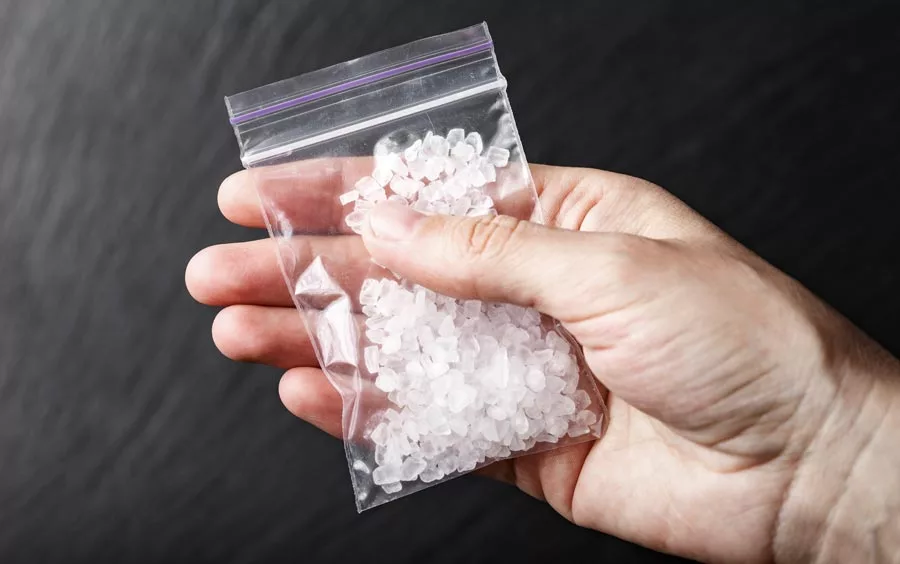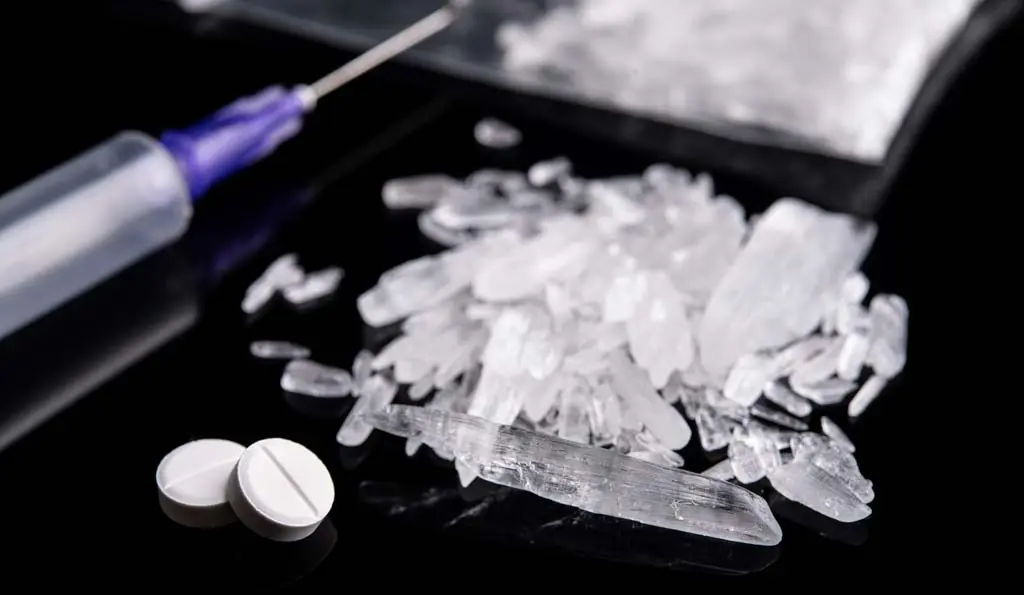The mindset of “my child would never use drugs” or “those types of drugs aren’t a problem in my town” are outdated assumptions that currently don’t even have a sliver of truth to them. There was a period in American culture when certain substances hadn’t permeated the fabric of tight-knit communities.
Currently, the opioid and methamphetamine epidemics have spread out to affect nearly every American family in some way. If any of your loved ones – specifically your kids – were struggling with substance abuse or even just dabbling, would you be able to identify the presence of drugs in their lives?
You’re vigilant enough to notice any physical indicators that could signal any drug use if you’re lucky. Unfortunately, physical signs may not manifest until later stages of abuse.
There may even be people you suspect your loved ones are using drugs with. Some family members will attempt to pick up on signals from conversations they have in person and on the phone.
However, it’s possible they could be speaking about drug use right in front of you, and you may not even know it.
Ice Cream and the Many Slang Terms for Meth
One way to tell if your loved ones could possibly be suffering from substance abuse issues is by listening to certain words in their dialogue. Meth has multiple slang terms individuals use to hide the fact that they’re actually talking about drugs.
One of the most commonly used phrases for meth is “crystal,” which is short for crystal meth. This name is used because of the distinct crystalline form the drug commonly comes in. Later, the drug community would adopt the nickname “crank” because of its effects on the user.
If you suspect meth use from someone you care about, the following terms should raise a red flag:
- Tina
- Christina
- Christie
- Go-Fast
- Go-Go Juice
- Chicken Feed
- Poop
- Trash
- Glass
- Ice
If you hear any of those terms used frequently, especially around characters you may already be suspicious of, it should be a huge red flag. Identifying the signs of meth use is vital for avoiding long-term abuse and the side effects that come with it. The rising purity of the ice cream drug in the US is causing the rapid deterioration of mental health in large populations across the country.
The Rising Purity of the Ice Cream Drug In the US
Before sometime around 2006 or 2007, most of the meth available on the market was produced using ephedrine, a common ingredient found in cough medications. However, after a crackdown on clandestine labs throughout the United States in the early 2000s, obtaining ephedrine in large quantities became all but impossible – even in Mexico.
Manufacturers of the drug began using a recipe known as the “P2P method.” This particular recipe uses phenyl-2-propanone, aluminum, methylamine, and mercuric chloride instead of the ephedrine.
Mostly used during the 1970s and early 80s by outlaw biker gangs, this method took a backseat to ephedrine-based production because of the latter’s use of fewer harmful chemicals. However, after the ephedrine crackdown, manufacturers realized the precursors needed to cook P2P meth were much easier to obtain – and in massive quantities.
The Spread of Super Meth in America

This method is what has led to the explosion in meth abuse we’re currently witnessing alongside the opioid epidemic. Mexican “super labs” are producing extremely large quantities of the drug – often tons at a time, in older, abandoned warehouses in cities near the United States border.
The surfacing of a high number of operations of this scale led to the price of meth bottoming out. Pounds are currently available for $1,000 in some states– a stark contrast to prices of the early 2000s when a pound of meth could fetch up to $10,000.
With super labs producing meth at record quantities and prices at rock bottom, competing cartels had only one choice to gain the upper hand – increase the purity. A great deal of the meth currently available on the United States black market is over 98% pure.
This is causing two huge issues. The first is the fact that meth produced using the P2P method causes more intense psychological side effects much faster than other variations. Drug-induced psychosis can set in in a matter of weeks instead of months or years and linger longer even after treatment.
The second challenge is relatively new territory for law enforcement and medical professionals. Overdose cases because of meth are also at an all-time high, presenting a fresh set of challenges for emergency workers.
Can You Overdose from the Ice Cream Drug?
It was rare to hear about overdoses related to meth in the past. Unfortunately, the tragic spike in deaths related to meth overdose has been overshadowed by the numbers associated with fentanyl.
In 2020, over 93,000 people died as a result of a fentanyl overdose. However, from 2015 to 2019, deaths associated with meth overdose quietly tripled in the background.
The numbers rose from 5,526 to a staggering 15,489 – a 180% increase. It’s worth noting that an uptick in overdose deaths would normally correlate with an increase in the number of users around the same percentage.
Surprisingly, the number of active meth users only rose 43% during the same amount of time. A situation resulting in a 180% increase in toxicity deaths and only a 43% increase in active users points only to one factor – a deadly spike in the purity of the drug or a change in the recipe that’s causing the wave of deaths.
While evidence points to the former being the culprit and not the latter, it still piques one’s curiosity. How is the ice cream drug made now compared to a decade ago?
How Is the Ice Cream Drug Made?
Overall, three primary methods exist for manufacturing methamphetamine. These three methods are known as the following:
- Red Phosphorous Method. This was the primary method used throughout the 1990s and early 2000s before the current method took over.
- Birch Method. The birch method, otherwise known as the Nazi method or Shake and Bake, is a cruder form commonly found in smaller, clandestine backyard labs across the United States.
- The P2P Method. The P2P, or Amalgam Method, is the process most heavily used in Mexican super labs. Most of the batches that end up in the hands of users today are made using this method.
Let’s examine each method in greater detail.
Red Phosphorous Method
The red phosphorous method is known for using ephedrine as the primary ingredient. Meth created using this method is known for a high that produces euphoric, energetic effects as opposed to the paranoia-inducing P2P method. Ingredients used for this method include the following:
- Hydriodic acid
- Hydrochloric (muriatic) acid
- Sulfuric acid
- Sodium hydroxide (lye)
- Sodium chloride (salt)
- Red phosphorous
- Iodine
- Isopropyl alcohol
- Ethyl alcohol (ethanol)
- Methyl alcohol (methanol)
- Ephedrine
- Pseudoephedrine
The Birch Method
The birch method, better known among meth users as shake and bake, is a process that involves hardly any lab equipment. Normally, this method is produced using one container or pot instead of a series of glass tubes and beakers. Because of the simplicity of its production, this is the method most commonly found in clandestine labs for private use across the United States. Common ingredients for this process include:
- Anhydrous ammonia
- Lithium metal
- Sodium metal
- Isopropyl alcohol
- Ethyl alcohol (ethanol)
- Methyl alcohol (methanol)
- Hydrogen chloride gas
- Hydrochloric (muriatic) acid
- Sulfuric acid
- Sodium chloride (salt)
- Toluene
- Naptha (Coleman Fuel)
- Methyl ethyl ketone
- Ephedrine
P2P Method
The P2P method is currently the method being used in the Mexican super labs south of the border. The problem with this method is the fact that it contains d-methamphetamine and l-methamphetamine isomers. D-methamphetamine causes the intoxicating effects that users crave from abusing meth. However, l-methamphetamine causes the negative mental side effects so often seen in current meth users.
- Phenyl-2-propanone (P2P)
- Methylamine
- Mercuric chloride
- Aluminum, hydrochloric acid
- Isopropyl alcohol
- Methanol, ethanol
- Acetone
- Benzene
- Chloroform
Because of the quickly deteriorating mental capacity of current meth users, it may be easier to identify the warning signs of abuse.
What Are the Warning Signs of Ice Cream Use?

In the past, it seemed that the warning signs of meth abuse were often physical as opposed to mental. While physical warning signs are still present, red flags may exist more in the form of mental symptoms. Some of the most common indicators present in users are listed below:
- Paranoia, or a belief that someone is chasing them
- Withdrawn from society, family, and friends
- Violent changes in mood swings
- Aggressive or violent tendencies or periods of rage
- Enlarged pupils
- Staying up for extended periods
- Long periods of sleep
- Engaging in ideas or beliefs that don’t make sense
- Difficulty staying focused on one task
- Becoming ultra-disorganized
Individuals who abuse meth engage in a behavior known as tweaking. They will remain hyper-focused on one activity, possibly participating in this activity for hours. However, when they get distracted, they’ll leave these projects, often unfinished, to move on to the next. This false belief that they’re accomplishing more leaves behind multiple unfinished tasks and projects.
Physical Side Effects of the Ice Cream Drug
Even though mental indicators may be more prevalent initially, this doesn’t exclude the possibility of physical side effects. Eventually, most everyone who suffers from meth abuse disorder will begin to manifest the physical signs of use. These signs include:
- Rapid weight loss
- Dark circles under the eyes
- Dry mouth
- Cracked, dry lips
- Dehydration
- Rapid heartbeat
- Spikes in blood pressure
Most of these symptoms are associated with the effects of short-term use. However, most of these physical side effects of the ice cream drug will increase in severity with long-term use.
There isn’t one guaranteed set of effects that users that long-term users are guaranteed to experience. The intensity of most of these effects heavily depends on the amount used, frequency of use, and any pre-existing conditions or accompanying addictions the user has.
What Are the Long Term Side Effects of Ice Cream Abuse?
Many long-term effects exist for individuals who suffer from meth abuse disorder. Again, many of the worst side effects will be mental because of the current manufacturing process. However, extended use will eventually lead to potential life-threatening physical challenges.
Mental
- Meth-induced psychosis
- Difficulty concentrating
- Memory loss
- Loss of cognitive abilities
- Difficulty maintaining relationships
Many of the long-term mental effects are repairable after extended periods of recovery. What are some of the long-term physical side effects?
Physical
- Extreme weight loss
- Loss of teeth
- Long-term blood pressure and heart issues
- High risk of heart attack and stroke
- Heart disease
Again, it’s possible to overcome the physical side effects after long-term recovery.
Methods of Treatment for Meth or “Ice Cream” Dependence
There is no one-size-fits-all treatment for individuals who suffer from meth abuse disorder. However, through assessments and one-on-one interviews with mental health professionals, clients can form a personalized treatment plan that includes the most effective forms of therapy.
Some of the most commonly used forms of treatment for meth abuse disorder include:
- Talk therapy and one-on-one counseling with therapists
- Cognitive-behavioral therapy. This form of treatment helps clients replace negative behaviors associated with meth abuse with more positive behavior habits.
- Dual-diagnosis treatment aims to remedy underlying mental conditions that exist as a trigger for meth abuse disorder.
- Group recovery meetings similar to 12-step programs are effective after inpatient or outpatient treatment.
- Group therapy with family members and loved ones also significantly affects a positive recovery.
One of the most critical steps in the recovery process is actually finding help for a loved one using methamphetamines. With the right support system and the will to recover, individuals who suffer from meth abuse disorder have a good chance at lasting recovery.
Is Lasting Recovery from the ‘Ice Cream drug’ Possible?
At Best Rehabs In Arizonas in both Colorado and Arizona, we pride ourselves on having a staff who believes in long-term recovery and is experienced in helping clients achieve it. We start with a quality, accredited medically supervised detox process that segues into a top-notch inpatient treatment stay.
Clients have regular access to therapy sessions with top-rated mental health and substance abuse specialists. We even have five-star chefs preparing meals for clients – nutrition is a huge part of recovery as well!
If you’re ready for a robust treatment program that attacks abuse disorders from every angle, contact a member of our admissions team today!




